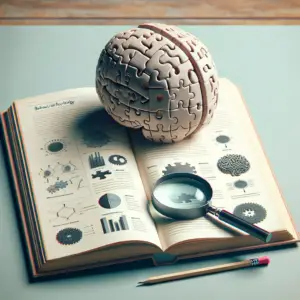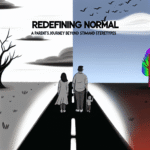Understanding Bipolar Disorder: Key Symptoms to Recognize for Effective Management

Bipolar disorder affects millions worldwide, yet remains one of the most misunderstood mental health conditions. Characterized by intense mood swings, from manic highs to depressive lows, this condition goes far beyond the ups and downs most people experience. Understanding bipolar disorder is essential to breaking stigmas, empowering those affected, and improving outcomes through awareness and proper care. This article delves into the nuances of bipolar disorder, offering insights, real-world examples, and actionable strategies for better management.
1. What Is Bipolar Disorder?
Bipolar disorder is a mental health condition defined by extreme mood changes. These shifts encompass periods of intense energy, known as mania or hypomania, and episodes of profound depression. Unlike simple mood changes, these episodes can severely disrupt an individual’s daily life, relationships, and productivity.
Types of Bipolar Disorder
- Bipolar I: Characterized by severe manic episodes lasting at least seven days or requiring hospitalization, often accompanied by depressive episodes.
- Bipolar II: Involves patterns of depressive episodes and hypomanic episodes, which are less severe than full mania.
- Cyclothymic Disorder: Features milder mood swings that last for an extended period, often two years or more.
- Other Specified or Unspecified Bipolar Disorder: Includes conditions that don’t fit neatly into the above categories, often due to substance use or medical conditions.
2. Signs and Symptoms of Bipolar Disorder
The symptoms of bipolar disorder are categorized into manic, depressive, and mixed episodes, each presenting unique challenges.
Mania and Hypomania
- Increased energy and activity levels.
- Reduced need for sleep.
- Grandiose ideas or unrealistic beliefs in one’s abilities.
- Engaging in risky behaviors, such as impulsive spending or reckless driving.
Depressive Episodes
- Persistent sadness or emptiness.
- Lack of energy and difficulty concentrating.
- Feelings of worthlessness or excessive guilt.
- Thoughts of death or suicidal ideation.
Mixed Episodes
These episodes combine symptoms of mania and depression, such as feeling agitated while simultaneously hopeless. Mixed episodes are often particularly distressing and challenging to manage.
2. Signs and Symptoms of Bipolar Disorder
The symptoms of bipolar disorder are categorized into manic, depressive, and mixed episodes, each presenting unique challenges.
Mania and Hypomania
- Increased energy and activity levels.
- Reduced need for sleep.
- Grandiose ideas or unrealistic beliefs in one’s abilities.
- Engaging in risky behaviors, such as impulsive spending or reckless driving.
Depressive Episodes
- Persistent sadness or emptiness.
- Lack of energy and difficulty concentrating.
- Feelings of worthlessness or excessive guilt.
- Thoughts of death or suicidal ideation.
Mixed Episodes
These episodes combine symptoms of mania and depression, such as feeling agitated while simultaneously hopeless. Mixed episodes are often particularly distressing and challenging to manage.
3. Causes and Risk Factors
Bipolar disorder does not have a single identifiable cause. Instead, it arises from a combination of genetic, biological, and environmental factors.
Genetic Predisposition
Studies show that individuals with a family history of bipolar disorder are at a higher risk of developing the condition. However, genetics alone do not determine its occurrence.
Neurological Factors
Research highlights differences in brain structure and chemistry among those with bipolar disorder. Irregularities in neurotransmitters like dopamine and serotonin play a critical role.
Environmental Influences
- Trauma or significant life stressors.
- Substance abuse and dependency.
- Sleep disturbances and circadian rhythm disruptions.
4. Diagnosis: How Bipolar Disorder Is Identified
Accurately diagnosing bipolar disorder requires careful evaluation due to its complexity and overlap with other mental health conditions. Misdiagnosis is not uncommon, often delaying effective treatment.
Steps in Clinical Diagnosis
- Patient History: A detailed account of mood changes, behavior, and family mental health history.
- Psychological Evaluations: Structured assessments to identify patterns consistent with bipolar disorder.
- DSM-5 Criteria: Diagnosis is guided by the Diagnostic and Statistical Manual of Mental Disorders, which outlines specific symptoms and their duration.
Common Misdiagnoses
Bipolar disorder is often misdiagnosed as major depressive disorder or borderline personality disorder. This misstep occurs when hypomanic or manic episodes are underreported or overlooked.
5. Real-World Case Studies
Understanding bipolar disorder through real-world examples highlights the challenges and triumphs faced by those living with the condition. Below are three illustrative case studies.
Case Study 1: Therapy and Medication Success
Sarah, a 27-year-old graphic designer, experienced alternating periods of extreme energy and debilitating sadness. Following a diagnosis of Bipolar II, Sarah combined cognitive behavioral therapy (CBT) with mood stabilizers. Over time, she regained control of her life and found stability in her career.
Case Study 2: Managing Bipolar in High-Stress Careers
James, a 42-year-old lawyer, faced challenges balancing his demanding workload with the highs and lows of Bipolar I. After seeking help, James adopted a routine including medication and mindfulness practices, allowing him to thrive professionally and personally.
Case Study 3: Overcoming Misdiagnosis
Maria, a college student, struggled for years with depressive episodes misdiagnosed as unipolar depression. Once her hypomanic episodes were identified, Maria’s treatment plan was adjusted, significantly improving her quality of life.
6. Treatment Options: Finding the Right Approach
Treating bipolar disorder often involves a combination of medication, therapy, and lifestyle modifications. A personalized approach ensures the best outcomes.
Medication Management
- Mood Stabilizers: Lithium remains a cornerstone in managing mood swings.
- Antipsychotics: Medications like olanzapine are effective for controlling mania.
- Antidepressants: Often used cautiously to address depressive episodes, as they can trigger mania in some cases.
Psychotherapy Approaches
- Cognitive Behavioral Therapy (CBT): Helps individuals recognize and manage thought patterns affecting mood.
- Interpersonal and Social Rhythm Therapy (IPSRT): Focuses on stabilizing daily rhythms to reduce mood episodes.
Lifestyle Modifications
- Regular exercise and healthy eating habits.
- Maintaining a consistent sleep schedule.
- Mindfulness practices, such as meditation and yoga.
7. The Role of Support Systems
Having a strong support system can make a significant difference for individuals living with bipolar disorder. Emotional and practical assistance from loved ones and the community plays a crucial role in recovery and management.
Family and Friends
- Educating themselves about bipolar disorder to provide informed support.
- Encouraging treatment adherence while maintaining empathy.
- Recognizing signs of mood episodes and intervening when necessary.
Support Groups and Community Resources
Peer support groups, both in-person and online, offer shared experiences and coping strategies. Organizations like the National Alliance on Mental Illness (NAMI) provide resources and a sense of connection.
Online Platforms
- Websites like PsyForU and Intent Merchant provide insightful articles and tools.
- Forums and apps for tracking moods and engaging with others in similar situations.
8. Bipolar Disorder in Children and Adolescents
Bipolar disorder can manifest in younger individuals, though the signs often differ from those observed in adults. Early diagnosis and intervention are key to effective management.
Unique Symptoms in Younger Populations
- Frequent mood changes that are more severe than typical childhood behavior.
- Irritability and hyperactivity that mimic attention-deficit/hyperactivity disorder (ADHD).
- Difficulty maintaining friendships and school performance.
Challenges in Diagnosis
Symptoms in children often overlap with other conditions like ADHD or anxiety disorders, complicating diagnosis. Misdiagnosis can delay appropriate treatment.
Approaches to Treatment
- Medication tailored to the child’s developmental stage.
- Family-focused therapy to build understanding and support.
- School accommodations to assist with academic success.
9. Living with Bipolar Disorder: Practical Tips
Living a fulfilling life with bipolar disorder is achievable through thoughtful planning, self-awareness, and consistent habits. Below are actionable tips to enhance daily living.
Developing a Daily Routine
- Maintaining a regular schedule for sleeping, eating, and activities.
- Using planners or apps to organize and track tasks.
Recognizing and Managing Triggers
- Identifying stressors that can precipitate mood episodes.
- Practicing relaxation techniques, such as deep breathing or journaling.
Building Resilience Through Self-Care
- Engaging in activities that promote physical and mental health, like yoga or creative hobbies.
- Fostering positive social connections and seeking help when needed.
10. Common Myths and Misconceptions
Bipolar disorder is often clouded by misconceptions, leading to stigma and misunderstanding. Dispelling these myths is crucial for creating a supportive environment for those affected.
Myth 1: Bipolar Disorder Is Just Mood Swings
Fact: While mood swings are a feature, bipolar disorder involves distinct episodes of mania and depression that can disrupt life significantly.
Myth 2: People with Bipolar Disorder Cannot Lead Successful Lives
Fact: Many individuals with bipolar disorder, including renowned artists and professionals, lead highly successful and fulfilling lives with proper treatment.
Myth 3: Medication Alone Can Cure Bipolar Disorder
Fact: Managing bipolar disorder often requires a combination of medication, therapy, and lifestyle changes for optimal results.
Myth 4: Bipolar Disorder Only Affects Adults
Fact: Bipolar disorder can manifest in children and adolescents, though symptoms may differ from those in adults.
11. Bipolar Disorder and Creativity
Throughout history, bipolar disorder has been linked to heightened creativity. Many artists, writers, and musicians have leveraged their experiences to fuel their creative output.
Historical Examples
- Vincent Van Gogh: Known for his vivid art, believed to have exhibited symptoms of bipolar disorder.
- Sylvia Plath: A celebrated poet whose works often reflected her inner struggles.
The Creativity Connection
Periods of hypomania can bring heightened energy, focus, and idea generation, leading to prolific creative work. However, depressive episodes may interrupt this flow, creating a challenging cycle.
Balancing Creativity and Mental Health
- Recognizing limits and avoiding overexertion during manic phases.
- Seeking professional guidance to maintain mental health without stifling creativity.
12. Employment and Bipolar Disorder
Balancing a career while managing bipolar disorder presents unique challenges, but with the right support and strategies, individuals can thrive professionally.
Challenges in the Workplace
- Managing stress during mood episodes.
- Maintaining focus and consistency during depressive phases.
Legal Protections and Accommodations
- Americans with Disabilities Act (ADA): Protects employees from discrimination and ensures reasonable accommodations, such as flexible hours.
- Family and Medical Leave Act (FMLA): Allows time off for medical needs without job loss.
Strategies for Success
- Disclosing the condition selectively and strategically, if necessary.
- Utilizing workplace resources like employee assistance programs.
- Building a routine to balance workload and mental health needs.
13. Tracking Your Progress: Journals and Apps
Tracking mood patterns, triggers, and responses to treatment is an effective way to manage bipolar disorder. Journals and digital tools can simplify this process, providing valuable insights over time.
Using Mood Trackers
Manually tracking moods in a journal allows for personalized insights. Users can note patterns, such as how sleep or stress impacts mood episodes, aiding in proactive management.
Recommended Apps
- eMoods: A bipolar mood tracker that records daily highs, lows, medications, and sleep patterns.
- Daylio: Combines mood tracking with journaling to help identify trends and triggers.
- Bearable: Tracks mood, energy levels, and physical symptoms to provide a holistic view.
Benefits of Consistent Tracking
- Improves communication with healthcare providers by providing detailed data.
- Enhances self-awareness, empowering individuals to recognize early warning signs of mood episodes.
14. Research and Emerging Treatments
Ongoing research is shedding light on innovative approaches to managing bipolar disorder. These emerging treatments hold promise for improved outcomes.
Advances in Brain Stimulation Therapies
- Transcranial Magnetic Stimulation (TMS): A non-invasive procedure that uses magnetic fields to stimulate nerve cells, showing promise in treating depressive symptoms.
- Deep Brain Stimulation (DBS): An experimental treatment involving implanted electrodes to regulate brain activity.
Genetic Research
Genomic studies are identifying genes linked to bipolar disorder, paving the way for personalized medicine and targeted therapies.
Experimental Medications
- New compounds are being developed to regulate neurotransmitters more effectively, with fewer side effects.
- Studies on anti-inflammatory drugs explore their potential to mitigate mood symptoms.
15. Resources for Further Understanding
Expanding knowledge about bipolar disorder is essential for those affected and their loved ones. Here are reliable resources for deeper insights.
Books and Literature
- “An Unquiet Mind” by Kay Redfield Jamison: A personal memoir by a clinical psychologist living with bipolar disorder.
- “The Bipolar Disorder Survival Guide” by David J. Miklowitz: Practical strategies for managing the condition.
Online Resources
- National Alliance on Mental Illness (NAMI): Comprehensive support and educational materials.
- Intent Merchant: A hub for mental health tools and articles.
- PsyForU: Insights and updates on mental health topics.
Podcasts and Multimedia
- The Hilarious World of Depression: Offers humor-infused perspectives on living with mental health conditions.
- Mental Illness Happy Hour: A platform for open conversations about mental health struggles.
Conclusion
Understanding bipolar disorder is a journey of empathy, knowledge, and proactive care. By learning about its causes, symptoms, and treatment options, we can break the stigma and empower individuals to lead fulfilling lives. Whether you’re seeking help, supporting a loved one, or simply expanding your awareness, the insights shared here emphasize that with the right resources and support, managing bipolar disorder is not just possible but entirely achievable.
Take action today by exploring resources, connecting with support networks, or starting a conversation to spread awareness. Remember, understanding is the first step toward making a difference.
Can someone who is bipolar live a normal life?
Yes, individuals with bipolar disorder can lead a normal and fulfilling life, but this typically requires a combination of effective treatment, a strong support system, and consistent self-care. Bipolar disorder is a lifelong condition, but with proper management, many people achieve stability in mood and success in their personal and professional lives.
Key strategies include:
- Adherence to Treatment: Medications like mood stabilizers, along with therapy such as cognitive behavioral therapy (CBT), help manage symptoms effectively.
- Healthy Lifestyle Choices: Adopting a balanced diet, regular exercise, and mindfulness practices, such as those described in this beginner’s guide to meditation, plays a significant role in maintaining mental health.
- Stress Reduction: Stress is a significant trigger for mood episodes. Learning natural remedies to combat stress can provide substantial benefits.
How to improve concentration with mental exercises is another helpful strategy for individuals aiming to maintain focus and cognitive clarity while navigating their condition.
Can a bipolar person act normally?
Yes, during periods of stability, individuals with bipolar disorder can act and feel “normal.” Stability can be achieved through proactive management of the condition, such as:
- Mood Tracking: Regularly monitoring symptoms using tools or apps can help identify early warning signs.
- Support Networks: Family, friends, and peer groups provide critical emotional support.
- Therapeutic Practices: Integrating strategies like mindfulness from resources such as this guide on meditation can stabilize emotions.
However, during manic or depressive episodes, behavior may deviate from the norm. Recognizing early signs of these episodes and seeking timely intervention are vital.
Additionally, How to improve concentration with mental exercises is a technique often recommended for managing the cognitive challenges that may arise during episodes.
What is a bipolar person like?
The experience of living with bipolar disorder varies significantly among individuals, but common traits during mood episodes include:
- Manic Phases: Elevated energy, reduced need for sleep, impulsive decisions, and grandiosity.
- Depressive Phases: Fatigue, feelings of worthlessness, loss of interest, and difficulty concentrating.
Outside of these episodes, many people with bipolar disorder function like anyone else, pursuing careers, relationships, and hobbies. Effective management involves understanding key symptoms and implementing therapeutic approaches like CBT.
In all phases, How to improve concentration with mental exercises remains an essential practice for fostering stability and focus.
How does a person with bipolar think in relationships?
Bipolar disorder can influence relationships, especially during mood episodes. Key aspects include:
- Emotional Intensity: Individuals may express heightened emotions during manic phases or withdraw during depressive periods.
- Communication Challenges: Misunderstandings can arise if symptoms are not recognized or if partners are unaware of the condition.
- Trust and Support: Open dialogue and mutual understanding foster healthier relationships.
How to navigate this?
- Educate the Partner: Sharing resources like Understanding Bipolar Disorder can build empathy.
- Practice Mindfulness Together: Engaging in mindfulness, using guides like this one, can enhance emotional connection.















